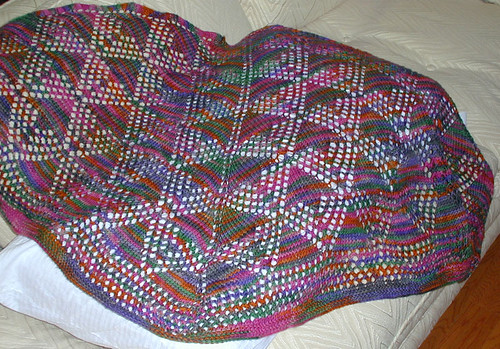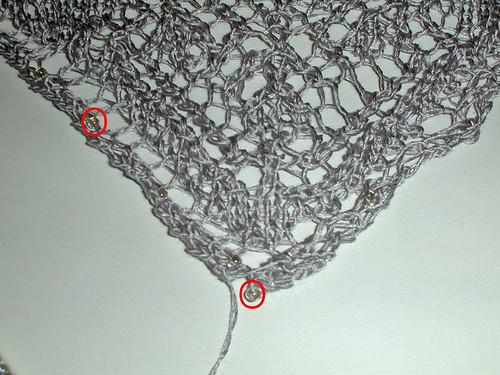
It has taken me a week at home to write about
Knitaly '07, Jane Thornley's knitting adventure in Tuscany. How to describe perfection? Spending 10 days with a congenial group of woman (plus one lone husband), staying in a castle on a Tuscan hilltop, eating fabulous food, and learning new ways of thinking about knitting... Even the weather cooperated, with unseasonable warmth and sunshine every day and not a single drop of rain.

After a few days in Florence (which I won't describe since I have written about it
before) we stayed at the
Castello di Gargonza, a 14th century castle between Siena and Arezzo. The castle and much of the village have been renovated with modern plumbing and heating. The accommodations are simple but comfortable, with fireplaces and even kitchens. My cousin Barbara and I stayed in the guard house just outside the castle walls, a short (uphill) walk to the main building.

Everywhere we looked the scenery was like a picture postcard. This is the view from the garden, but
everywhere the views were like picture postcards. One hardly knew where to look first! What was particularly striking was the colors... the palette of Tuscany was uniform, no matter where we went, with its greens, browns, and terracotta. This time of year the colors are a bit more subdued than in the summer, when the landscape is ablaze with right yellow fields of sunflowers. But the more subtle October palette was beautiful in its own way and provided an inspiration for our knitting projects.

Jane's knitting workshops involved "free range knitting," wherein one ignores almost all rules, and combines different fibers, colors, and textures in an imaginative way. As Jane says, "Remember that knitting free-range style requires a different approach than regular, pattern-driven knitting... Free range knitting is about following your own knitting spirit and letting go." For somebody as left-brained as I am, that is a tall order!

Our projects consisted of a scarf/shawl inspired by the colors of Tuscany. Jane provided us each with a pack of gorgeous yarn before the trip, and each one was a little different. The basic yarns were assorted colors of La Lana Bombyx Silk, with a variety of ribbon and novelty yarns thrown in. We were encouraged to supplement the yarn with bits and pieces from our own stash, but several of us had nothing that was suitable and stuck to the yarns in the pack. We were told to cast on 30 stitches, increase for a while and then

decrease for a while to make the center section, and then to knit straight on one end, then pick up stitches and knit straight on the other end. Of course, since Jane doesn't believe in rules, she fully expected (and probably hoped) that some of us would totally ignore even those simple guidelines.

The results definitely provide an interesting fabric, though I'm not entirely convinced that I would wear something with that much color. I still have about 1,000 ends to weave in – a definite drawback to the multi-yarn approach – and some embellishing to do with beads, so it is still very much a work-in-progress. Isn't it amazing how we all started with similar yarn and came up with such different results?
Of course we spent a lot of time sight-seeing, visiting San Gimignano, Siena, Volterra, Chianti, Cortona... There was a twist, though – on the bus there was always a lot of knitting going on, either on our Knitaly project or other projects we brought from home, and our shopping expeditions included yarn and bead shops whenever possible. And nobody said "Are you knitting
again???" There is a lot to be said for travelling with other knitters!
 Pattern: Cable-Wise Cashmere by Karen Damskey and Leslie Storman in Knitter's Stash
Pattern: Cable-Wise Cashmere by Karen Damskey and Leslie Storman in Knitter's Stash
















































